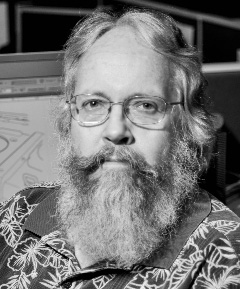Slovakian Henry Biescar Moves to La Crescenta

president of the Historical Society
of the Crescenta Valley and loves local history. Reach him at
lawlerdad@yahoo.com.
Those who know CV’s history are familiar with the various ethnic and international groups that have made up our history. Starting with the Indians, then the Spanish and Mexicans and, into the ’20s and ’30s, the Italians and Germans. The Germans established Hindenburg Park which attracted German-Americans from all over California. Today we have the Koreans with their many churches, and Armenians, also with churches and cultural centers. But few know that in the ’30s, La Crescenta became the hub for the vibrant Czechoslovakian population of Los Angeles with the building of the Czechoslovakian Hall and Park by the Slovakian patriot Henry Biescar.
Slovakian immigration to the U.S. began in the 1870s after many years of unhappy Hungarian domination of the Slovaks. Whereas most of the immigrants settled in the coal mining regions of Pennsylvania, many came to Los Angeles including brothers Henry and George Biescar in 1883. Quite a few of the immigrating Slovaks, including the Biescars, were “drotari” or wire workers from northern Slovakia, highly skilled in producing metal wire and wire products. Henry Biescar opened a wire-works operation in downtown Los Angeles and quickly prospered, as did other Slovakian drotari, producing wire baskets for fishing and industry, birdcages, furniture and industrial products.
Henry Biescar prospered in business and real estate, and retired in 1915 after many years of bad health. His doctors advised a move to higher elevation in the foothills of the San Gabriels as a cure. He purchased 11 acres in La Crescenta above Foothill on the east side of La Crescenta Avenue, between what is now Orange and Henrietta streets (Henrietta is named for one of Biescar’s daughters). After spending three years clearing the sagebrush, planting a variety of fruit and nut trees and building a home, the Biescar family with four kids moved into their new abode. The land above Foothill was almost entirely wild land then with only a few homes scattered about. La Crescenta Avenue was a narrow dirt road that also served as the driveway to the Bissell family’s Hi-up Ranch, what is now the Pinecrest neighborhood. The unbridged dry wash that drained Goss, Eagle and Shields canyons would erupt into a torrent at every rainstorm. It crossed La Crescenta Avenue at El Caminito, occasionally making the road impassible.
The four Biescar kids, Charles (known as “Amo”), Marion, Mildred and Henrietta had the idyllic, healthy childhood described by so many old-timers who grew up in La Crescenta during that era. They walked each day down to La Crescenta Elementary School, passing by the La Crescenta General Store and Post Office. The wooden store on the southeast corner of La Crescenta and Foothill had a frontier look, shaded by giant pepper trees, and the kids would stop and pick up the newspaper each day for their dad. Summer days were spent picking, canning and drying the variety of fruit and nuts growing on their trees, and swimming in their reservoir. The many Biescar relatives would come to visit Henry and his family “out in the country” and be sent home with boxes of whatever fruit was ripe at that time.
The Biescars were leaders in the community of old La Crescenta. They helped found Holy Redeemer Church. Mrs. Biescar was a president of the La Crescenta Woman’s Club, and the Biescar daughters were members of the La Crescenta Woman’s Club Juniors with Henrietta serving as president of that group. Mr. Biescar, ever the Slovakian patriot, was involved with the Czechoslovak Patronat, a conglomeration of various Czech and Slovakian cultural groups in Southern California. When, in the early ’30s, it was determined that they would build a cultural center, Biescar donated land that he owned near his home in La Crescenta. Not only would that give a boost to the Czechoslovak Patronat to establish a home base, but it would also benefit La Crescenta. Local labor would be used to build it and the influx of people to the cultural center would bring in outside dollars to local businesses.
Next week I’ll cover the history of the Czechoslovakian Hall of La Crescenta.
